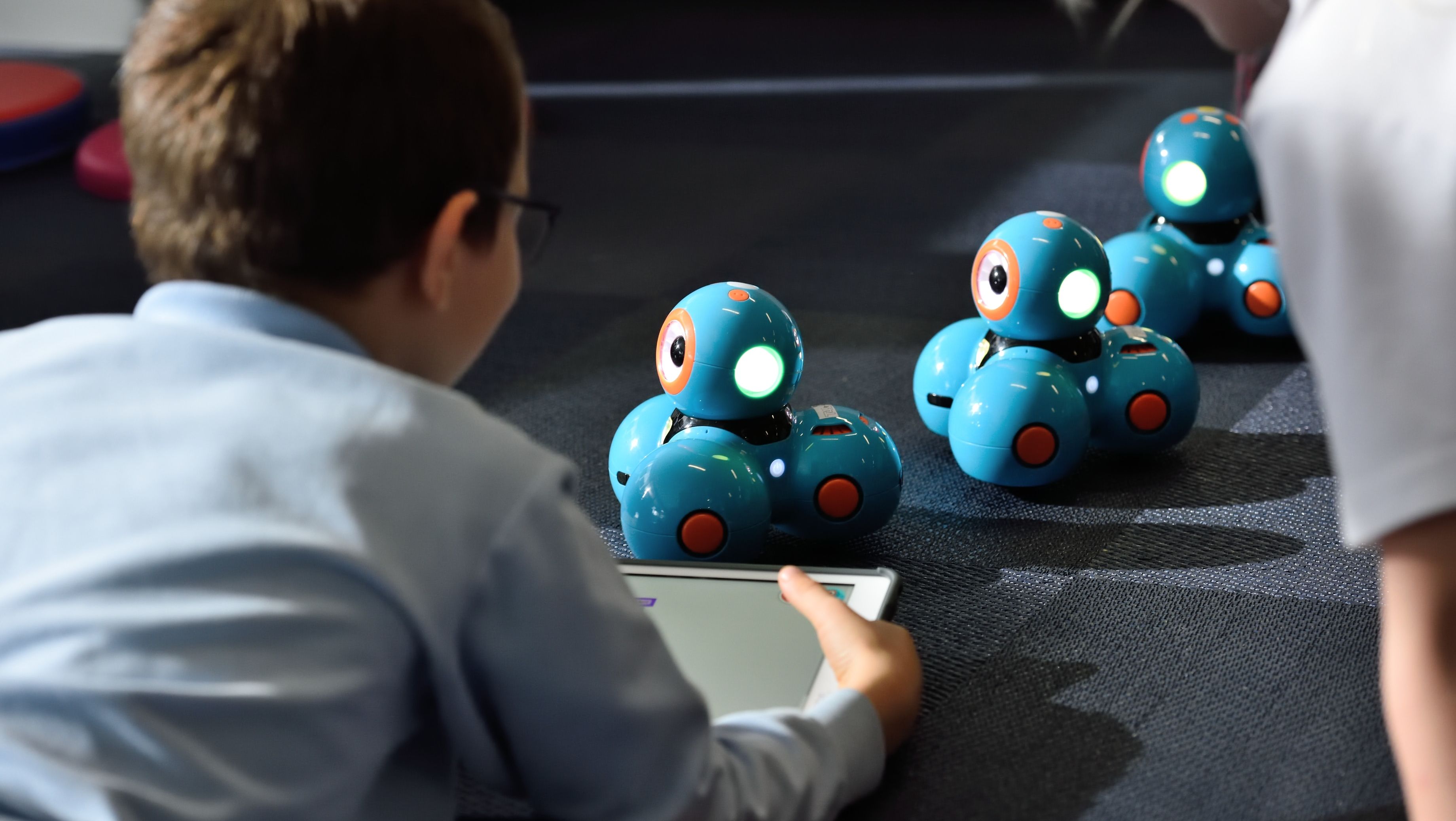Not child’s play: Potential risks of smart toys explained
Holiday shopping lists in 2023 will surely include smart toys that feature the latest technology. But two Temple experts are warning that these toys may pose dangers to children.

Toys are meant to provide a fun and creative outlet for children. And yet, over the years toys have faced many recalls, at times due to choking hazards or the presence of toxic materials. But as technology advances, toys are introducing new kinds of threats to children. A recent report from the U.S. Public Interest Research Group spells out some major concerns with AI-enabled smart toys, including that they improperly collect and store children’s data.
As toymakers rush to integrate new technologies like cameras, microphones and computer chips, experts are warning of the potential dangers and cybersecurity risks that may be hidden in these new AI-enabled toys.
In this Q&A, Subodha Kumar, the Paul R. Anderson Distinguished Chair Professor of Statistics, Operations and Data Science, explains the risks associated with smart toys. He is joined by Kathy Hirsh-Pasek, the Stanley and Deborah Lefkowitz Faculty Fellow of Psychology, who tells parents everything they need to know about smart toys and how they affect children.
What is a smart toy?
Subodha Kumar: Smart toys are very similar to any other smart device in that they have the capability to interact. Children can ask them questions, and they will respond, sort of like ChatGPT. And there is a big continuum of smart toys. Some are smarter than others, but by and large, smart toys have a computer processor, some kind of audio-visual component like a microphone and camera, and they try to mimic human intelligence.
What are the risks associated with smart toys?
SK: Like smart devices, many smart toys collect data. When a child asks the device a question, that information is collected and stored. These devices can collect video and audio data. They can collect data on eyeball movement. They can even track the physical location of the toy.
Why is it a concern that smart toys are spying on children and collecting their data?
SK: The first reason this is concerning is that there have been data breaches where hackers accessed the data collected by the toys. This allows hackers to gain access to a lot of information about a child, including their physical location when playing with the toy. And while adult information can also be breached by hackers, adults can react to these breaches in a much more rational way than a child.
It’s also not clear that companies are complying with the Children’s Online Privacy Protection Act, which regulates how children’s online data can be collected by companies. A big piece of this is consent. Parents oftentimes don’t know what kind of data is being collected by these toys, and children can be easily manipulated into giving data.
But perhaps most alarming is that there is evidence that data collected by smart toys is ending up on deep fake child pornography sites. Smart toys maybe weren’t such a huge problem a couple of years back, but when you combine the data they collect with newer generative AI technology, they have become a serious problem.
What do parents need to know about smart toys?
Kathy Hirsh-Pasek: The under-5 age group doesn’t need smart toys. We’ve been studying the digital toy market for years. All of the research that’s come out suggests that toys with computer chips can push people away, and not just fellow kids, but parents and other adults too. That’s not the best idea for little ones, because what they need in our world today is more people time, not less.
Parents should also know that young children’s excitement for these toys is often short-lived. Remember, kids still like cardboard boxes. I went and looked at the top Christmas toys of 2022, and guess what? They were all your traditional toys like building blocks, Legos, Barbie Dreamhouse, craft stuff—that’s what kids still like.
Do smart toys hinder the development of children?
KHP: It depends. If the toy serves some kind of purpose like teaching a kid how to code, or if kids learn how to program the toy to do certain things, those toys can be good. But don’t expect the toy to be a substitute for social interaction. Humans have this intricate system that’s been evolutionally prepared. Social interaction with human brains is the key to all learning and relationship-building. And the farther we get away from how our human brains learn, the more we compromise that system. They’re finding that kids who spend more time on a screen have more developmental delays, because the machines aren’t geared toward social interaction.
What can parents do to ensure the toys they’re buying their children are safe?
KHP: There are a few principles I look for in a good toy. My main one is that playing with the toy should be 90% kid, 10% toy, meaning that the child is the one driving the fun and not the other way around. The second principle is that the toy should be social. While it’s okay for kids to play with toys on their own, the best toys are those that can be played with others.
Lastly, the toy needs to have staying power. Some of these toys sing to the child or try to hold a conversation. They’re cute the first couple of times, but then the kids never look at them again. Kids like to be creative and not be told how to play with a toy. If you buy blocks, kids will keep playing with them. They’ll keep playing with Legos and train sets. But if you buy something that lights up and talks back, it might only last a month before it’s back in the box. Over time, kids may even find the toy’s box is more exciting than the toy itself.
Learn more
- Statistics, Operations and Data Science at Temple: Artificial intelligence, data analytics and machine learning are rapidly becoming crucial in all industries. The Department of Statistics, Operations and Data Science offers programs that help students prepare for the ever-changing job market.
- Psychology at Temple: The Department of Psychology and Neuroscience is home to cutting-edge research and faculty who are providing the community with the best current practices in psychology.
- Become an Owl: Learn more about applying for one of our undergraduate, graduate or professional programs.


